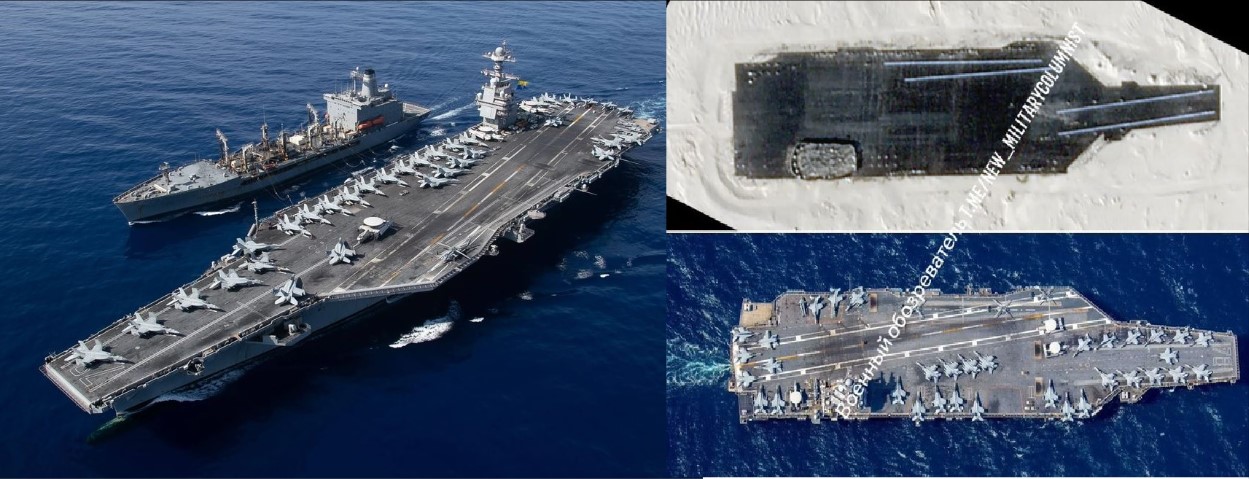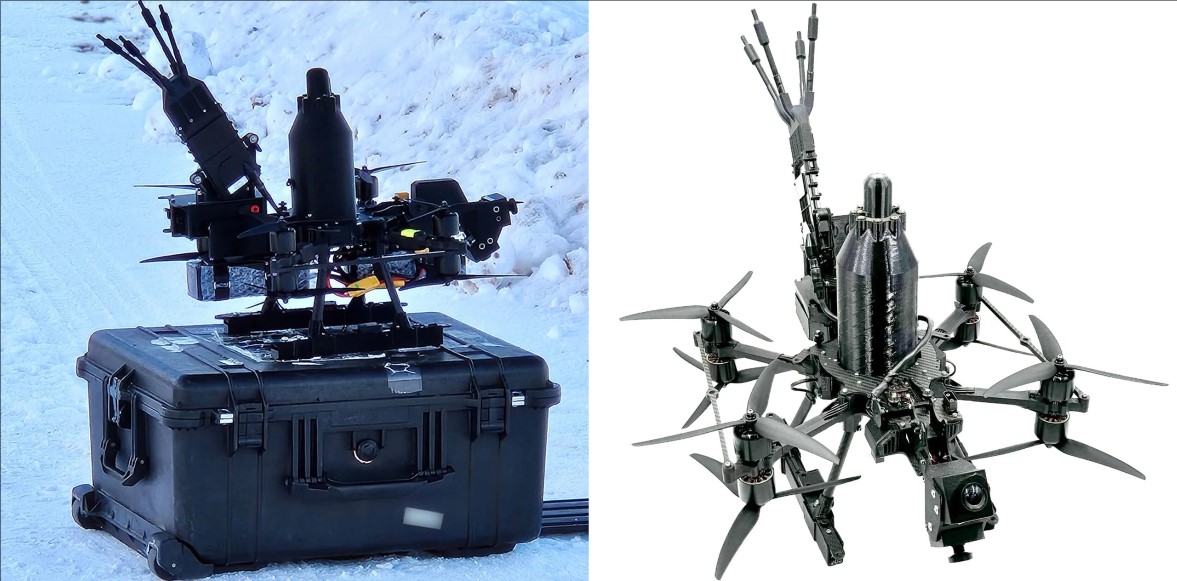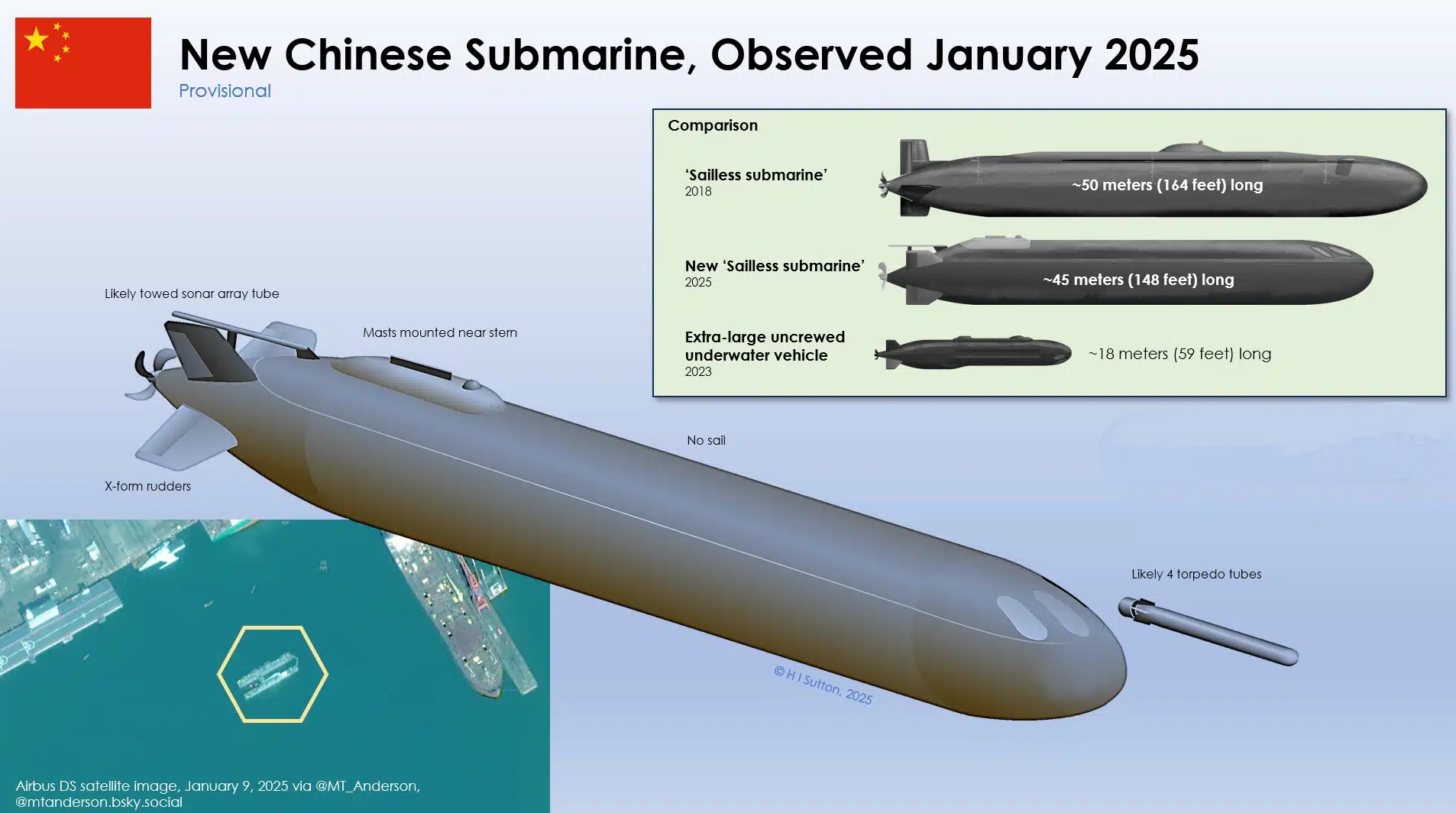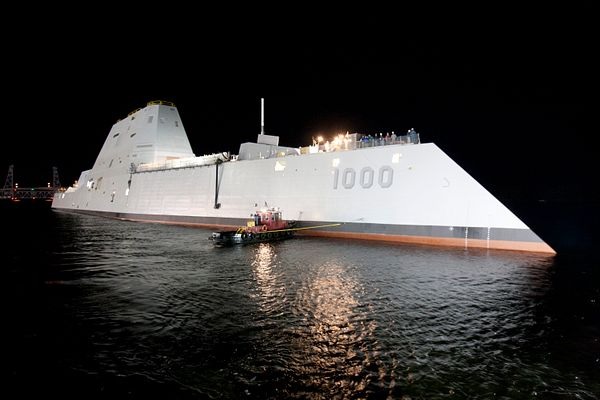China Now Has A Full-Scale Model Of US Navy Aircraft Carrier USS Gerald R. Ford For Target Practice

China navy has set its sights on a new target—a full-scale replica of the USS Gerald R. Ford, the latest super-carrier from the US Navy. The timing coincides with the USS Gerald R. Ford returning home after an extended deployment due to the Israel-Gaza conflict, prompting speculation about China intentions in the South China Sea.
The People Liberation Army Navy (PLA-Navy) is actively enhancing its capabilities to counter US Navy carriers and strike groups, focusing on anti-access and area denial weapons. China is expanding its arsenal of anti-ship ballistic missiles, alongside improving anti-ship cruise missiles and future plans to acquire hypersonic anti-ship cruise missiles.
Satellite imagery captured on January 1 reveals a new carrier target in China Taklamakan Desert, resembling the USS Gerald R. Ford. This "phantom" carrier, equipped with radar reflectors, aims to replicate the radar signature of an actual ship without major construction. The target facilitates the testing of radar seekers, weapons, and electronic warfare systems.
Analysis indicates that work on the target carrier began in November 2023, showcasing China commitment to advancing its military capabilities. This development comes as the Chinese military transitions from rudimentary ship-shaped targets to a more sophisticated model that provides more accurate test results and realistic training scenarios.
While the US Navy has historically led in super-carrier deployment, the PLA-Navy is working to bridge the technological gap. The upcoming Fujian aircraft carrier, set to begin sea trials, represents a significant leap for China. Although smaller than the US Navy Ford-class carrier, the Fujian boasts a larger displacement than previous Chinese carriers, positioning it to challenge US dominance in size and technology.
Despite China pursuit of carrier-building capabilities, it is also heavily investing in "carrier-killer" missiles, questioning the survivability of US aircraft carriers. Chinese maritime analysts argue that the US Navy is vulnerable to Chinese long-range missiles, particularly in the South China Sea.
However, US experts emphasize the carriers resilience, citing built-in waterproof chambers, redundant conduits, and extensive armor. The mobility of carriers, capable of traveling a 700-square-mile radius in 30 minutes, adds to their survivability by evading anti-ship weapons.
As tensions rise in the South China Sea, the development of China new aircraft carrier target and the advancements in its naval capabilities underscore the intensifying competition with the US Navy.



